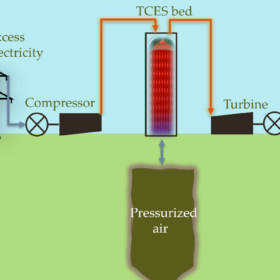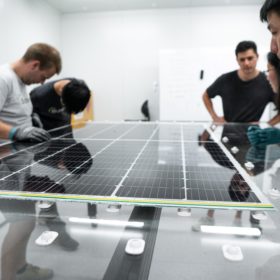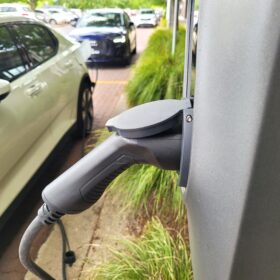Modelling finds building with WA company’s solar windows nearly eliminate operational emissions
Western Australian solar window company ClearVue says it has proven its products can reduce buildings’ carbon emissions by as much as 90%, qualifying the technology for the world’s most comprehensive future building standards for energy performance.
Improving compressed air energy storage efficiency via chemical reactions
Scientists in the United States have proposed to use a thermochemical energy storage (TCES) technique that stores energy in chemical bonds to recover the heat produced during air compression operations. According to them, this innovation may increase the round-trip efficiency of compressed air energy storage to 60%.
‘Ultra low-cost solar’ gets a $40 million R&D boost from ARENA
The Australian Renewable Energy Agency has announced $40 million in research and development funding is up for grabs across two streams. Stream 1 consists of cells and modules, and Stream 2 is focused on balance of system along with operations and maintenance. It is hoped the additional funding will spur Australia’s pioneering solar research to push for the federal government’s “ultra low-cost solar” target of $15/MWh.
Weekend read: Solar-plus-storage for aquaculture aeration
Recent research from Thailand has shown that solar-plus-storage on floating platforms could be the cheapest option to power energy-intensive aeration systems in aquaculture projects. The battery accounts for around 54% of the capital costs, which is why system sizing would be key for economic viability.
Australia prepares for first solar ‘upcycling’ facility while recycling operations expand
As Australia stares down a deluge of worn out solar panels, recycling – and indeed upcycling – programs are grinding into gear. In Victoria, a site has been found for Australia’s first facility to recover and reuse solar module materials, while Reclaim PV has extended its manufacturer partner and pickup location lists.
Wollongong researchers’ graphene discovery to unlock cheaper, more efficient li-ion batteries
Researchers at the University of Wollongong say they have discovered a new form of graphene which will improve both anode and cathode materials in lithium-ion batteries, making them cheaper and more efficient. Collaborating with Sicona, the company has agreed to buy all the researchers’ intellectual property relating to the new material.
Solar redox flow cell for residential energy storage
The device was designed by scientists in Portugal to optimise light absorption by the semiconductor and ensure an effective diffusion of redox species while offering minimal electronic and ionic transport resistance. The cell has a 25cm2 photoactive area and relies on ferrocyanide/anthraquinone redox flow chemistry and a nanostructured hematite photoelectrode.
Grid stability and 100% renewables
New research from Stanford University professor Mark Jacobson seeks to remove any doubts about grid stability in a world powered entirely by renewable energy. The latest study models 100% wind water and solar powered grids across the United States, finding no risk of blackouts in any region and also broad benefits in cost reduction, job creation and land use.
Google lends a hand in the search for new solar cell designs with open-source tool
Scientists in the United States developed a computer simulator that can calculate the conversion efficiency of different solar cell materials and configurations – helping to guide research and optimisation of new cell designs. The simulator is available to researchers as an open-source tool to save time and spot the best opportunities for optimisation of any given approach.
New tool to understand component failure rate in PV-related fires
Scientists have developed a new model based on fault tree analysis to evaluate the frequency of fires caused by rooftop PV systems and assess system safety and reliability. They claim that the new tool has the potential to identify fault linkages in systems, highlight failure patterns before they arise, and compare multiple designs for safety.















